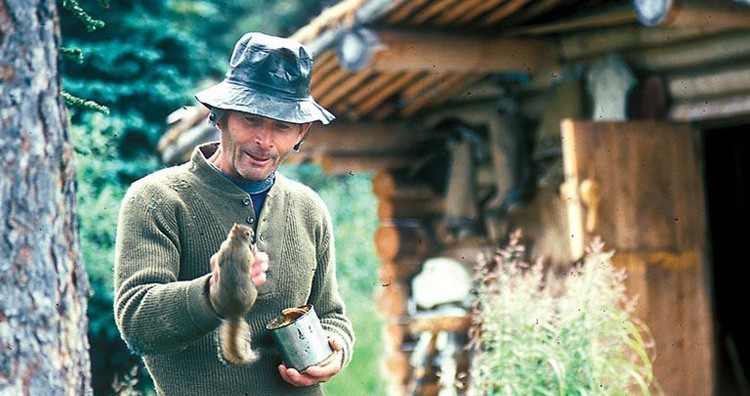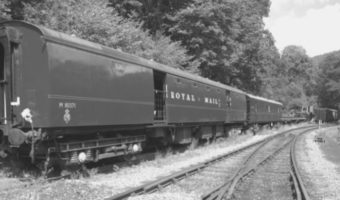Richard Proenneke, the American Naturalist and Former Heavy Equipment Operator, Built a Cabin and Spent 30 Years Alone in the Alaskan Wilderness
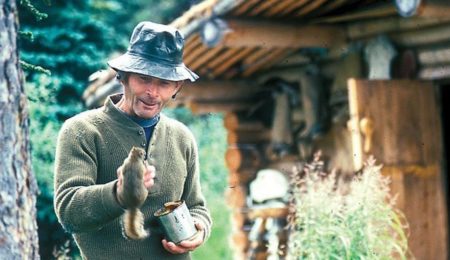
Many of us have felt like leaving our hectic lives behind and becoming one with nature to finally find the peace and quiet we crave. However, only a handful of people have the courage to break free from the shackles of society and chase the dream. Richard Louis Proenneke was one such individual who left his career and life in the city to live in the wilderness of Alaska. He moved near Twin Lakes and built a log cabin on its shores all by himself. He fished, hunted, gathered, and raised his own food, but he would fly in supplies occasionally. He lived in complete isolation for 30 years.
Born in the early 20th century to a military veteran and well driller, Proenneke had a humble childhood that prepared him for a life of extreme frugality.
William Christian Proenneke, Richard Proenneke’s father and a World War I veteran, worked as a professional well driller after the war. Laura Proenneke, his mother, was a homemaker. They got married sometime between 1909 and 1910 and had six children – three sons and three daughters. Robert, Richard, and Raymond were the three boys, and Helen, Lorene, and Florence were the three girls. Robert was the eldest and Raymond, also called Jake, was the youngest of them all.
There is some confusion over when Richard was born. Although it is often said that he was born in 1917, census and Social Security records show his birthday to be 4 May 1916, and his place of birth was Lee County, Iowa. The Great Depression took place soon after Richard Proenneke was born, so, he had grown up amidst the financial troubles of that time. His modest upbringing also taught him to lead a frugal life.
Proenneke served in the United States Navy as a carpenter during World War II. After spending almost two years at the naval base at Pearl Harbor, he was transferred to San Francisco where he got sick and spent six months at the hospital.
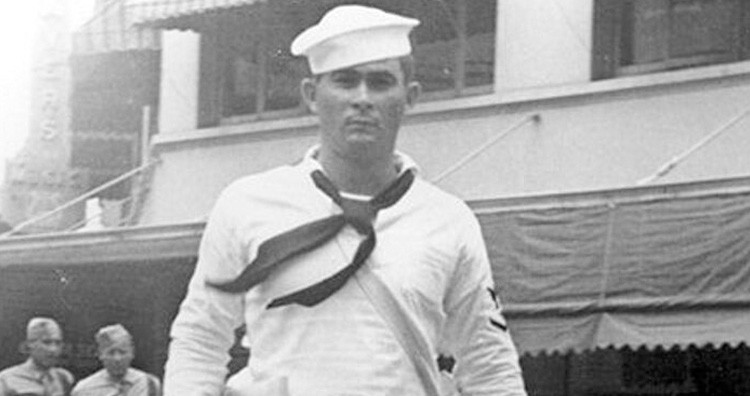
On the fateful day of December 7, 1941, the Japanese led an attack on the Pearl Harbor naval base in Honolulu. Just one day after that, Proenneke enlisted to join the United States Navy. He was stationed at Pearl Harbor where he served as a carpenter for nearly two years. After that, he was transferred to San Francisco where he was supposed to join a ship assignment. While there, he went for a hike and contracted rheumatic fever. He was then admitted to the Norco Naval Hospital where he spent six months recuperating from the rare inflammatory disease.
The war ended while Proenneke was still hospitalized, and he received a medical discharge from the ranks of the U.S Navy in 1945. Sam Keith, a writer, and friend of Proenneke, later revealed that the illness was a wake-up call which motivated Proenneke to focus on his health and strength for the rest of his life.
After his discharge, Proenneke became a diesel mechanic, and he was very good at his job. In 1950, he went to Alaska’s Shuyak Island. He also worked as a repairman and heavy equipment operator at the Naval Air Station, which was located at Kodiak.

After receiving a medical discharge from the Navy, he went back to school and received training to work as a diesel mechanic. Thanks to his adaptability, strong work ethic, and high intelligence, Proenneke became a highly skilled mechanic. Despite being good at his job, he was unhappy with this life and wanted to be closer to nature, so, he took a job at a sheep ranch in Oregon. During this time, he visited a friend in Alaska and was immediately drawn to the wilderness.
In 1950, he relocated to Shuyak Island in Alaska and got a job at the Naval Station at Kodiak. For the next several years, Proenneke worked throughout Alaska, sometimes as a diesel mechanic, and other times, as a salmon fisherman. He was hired by King Salmon’s Fish and Wildlife Service for the Alaska Peninsula. His skills and reputation as a mechanic worked in his favor. He found enough work to save up for an early retirement.
In 1968, Proenneke arrived at Twin Lakes, Alaska, where he built a cabin by hand with resources he found in his surroundings. After spending 16 months there, he went to visit his relatives. He returned shortly after and stayed there for the next three decades.

In 1962, Proenneke first came across the area that is now known as Lake Clark National Park and Preserve. Located 120 miles southwest of Anchorage, the site is known for its strikingly wild beauty. In 1968, he chose Twin Lakes as the spot where he would build his cabin and live out his retirement. In the beginning, Proenneke made arrangements to live in the cabin of Spike Carrithers, a retired Navy captain he knew from Kodiak. The cabin was located on the upper lake which was close to the site Proenneke had chosen for his own cabin.

He gathered materials from around the site to build the cabin and the furnishings. Despite being 52 years old, Proenneke was in great physical shape, and he built everything from scratch. He hand-picked the trees, cut them down, and then created interlocking joints for building the roof rafters, and framing the walls of the cabin. The base was made up of gravel that he collected from the bed of the lake. He dug stones from his surroundings to build the flue and fireplace. He mortared the stones to create the hearth and the chimney.
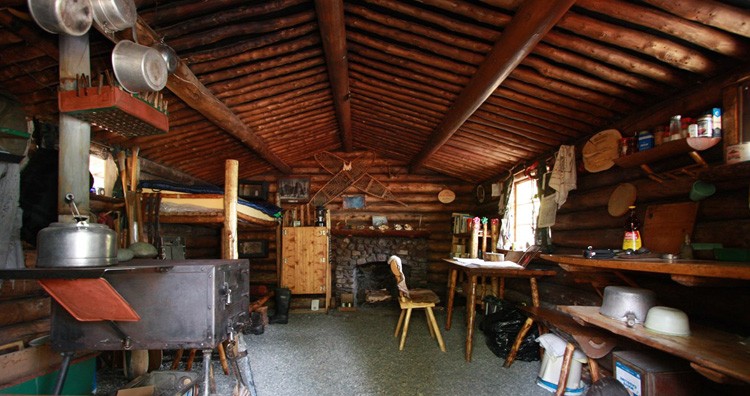
For food storage, he used one gallon (US) metal containers. After cutting the cans into basin shapes, he buried them underneath the frost line. This was the best way to store perishables for extended periods. The cool earth kept them from going bad, and they would still be accessible during the freezing winter months. Leon Reid Alsworth, a friend of Proenneke, would periodically bring him food and other supplies.
He lived there for 16 months, after which he went to visit some relatives and get more supplies. He returned the next spring and stayed at Twin Lakes for 30 years. He would only leave occasionally to visit his family.
After spending over three decades in the wilderness, Proenneke had grown too old and weak to carry on with the solitary life. He returned to civilization in 1999 when he was 82 years old. Three years later, in 2003, Proenneke died of a stroke.

In 1999, at the age of 82, Proenneke came to California to live with his youngest brother, Jake. He donated his cabin to the National Park Service. To this day, the remote location of Twin Lakes is known for the cabin that Proenneke built so masterfully. It is a testament to the skills he had as a woodworker and carpenter. On 20 April 2003, he suffered a stroke and passed away. He was 86 years old at the time of his death.
Proenneke heavily documented his experience of living at Twin Lakes. He recorded his everyday activities along with valuable natural and meteorological data in journals and on film. The entries were later used for creating documentaries and writing books.

Richard Proenneke was an avid diarist, and he used a 16 mm video camera to document his life in the Alaskan wilderness. Sam Keith, who knew Proenneke from his days at the Naval Station at Kodiak, first brought up the idea of turning the journal entries into a book. In 1973, One Man’s Wilderness: An Alaskan Odyssey was published, but Proenneke alleged that Keith had altered many details for embellishment. The book was re-issued in 1999 in a new format, and it won that year’s National Outdoor Book Award.
In 2003, Proenneke’s films and some copyrighted texts from the award-winning book were used for creating the documentary called “Alone in the Wilderness.” The documentary, which has footage of Proenneke gathering resources and building the cabin, was aired on U.S. Public Television. In 2005, more journal entries were used to create More Readings From One Man’s Wilderness. The book was published by the Alaska Natural History Association and National Park Service.
In 2010, Alaska Geographic published The Early Years: The Journals of Richard L. Proenneke 1967–1973. In 2012, the Donnellson Public Library, which is located near Proenneke’s hometown, hosted a museum exhibit dedicated to the inspiring naturalist. The exhibition featured a replica of the cabin along with some of Proenneke’s writings and artifacts.
Over a decade after his passing, Richard Proenneke is still alive in the hearts of every survivalist and naturalist that wants to follow in his footsteps. His legacy continues to this day.














